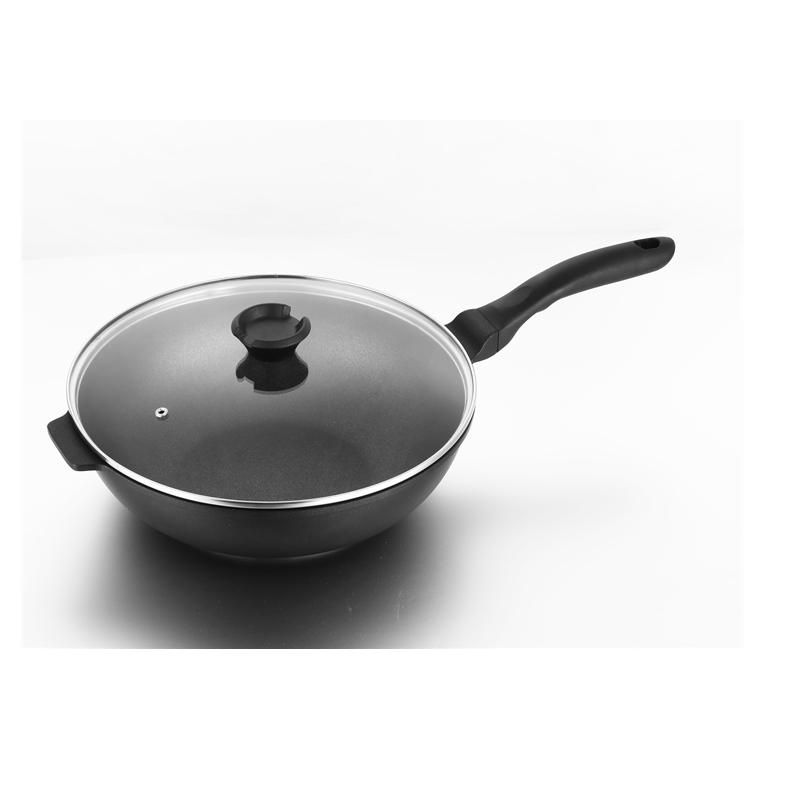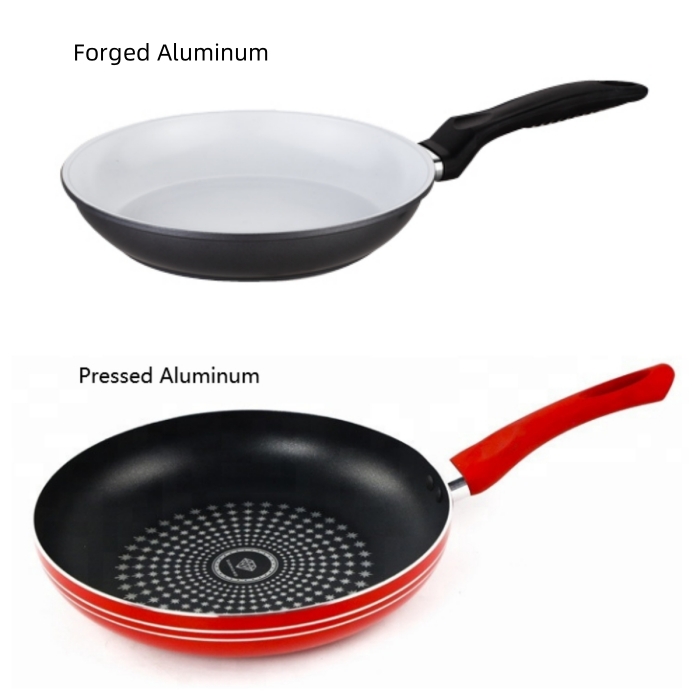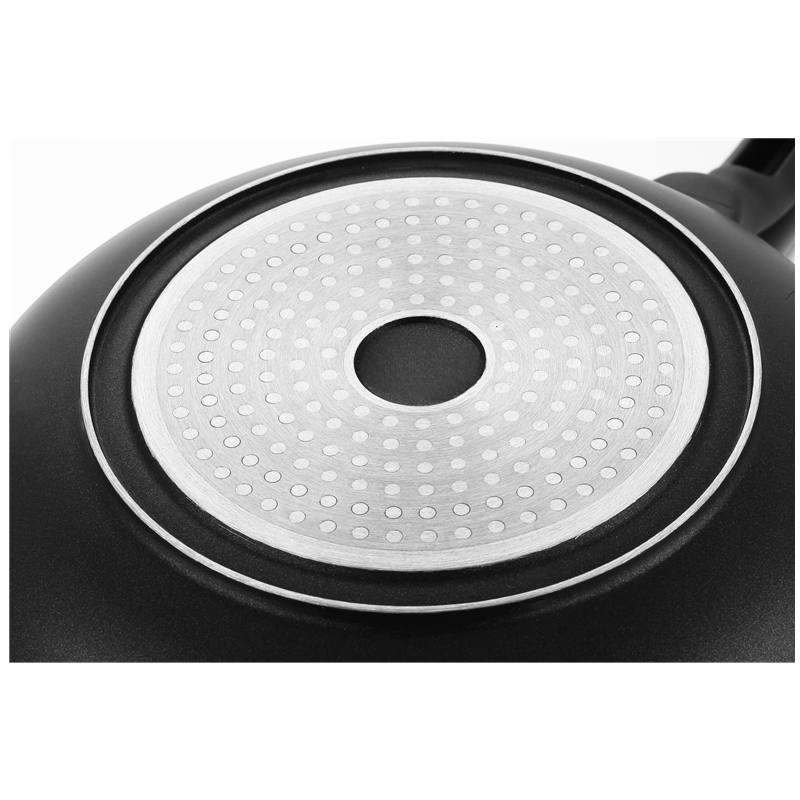- Aluminum cookware is common in use nowadays. However, there are still some different kinds of production, thus makes the products be different. die-cast Aluminum cookware, pressed cookware and forged Aluminum cookware
-
1. Advantages of die casting Aluminum
-
Using die-cast aluminum, it is easy to achieve different wall thicknesses in cookware, for example, the thick bottom of the die-cast Aluminum casserole can distribute and store heat well, the thin side walls can reduce weight and do not absorb too much unnecessary heat, and finally the strong edges can make the cookware stable. Another advantage of cast aluminum is that it is largely free of material stress. Pour the cooker into the liquid to cool, conversion is not necessary. Since aluminum expands considerably when heated, it is an advantage if the material stress created in the cooker does not stress as a result of forming.
- 2. Disadvantages of die casting Aluminum
The manufacturing process is usually more expensive, as is the final product, it is usually much higher than other two kinds of producing. In addition, the surface of cast aluminum cookware sometimes shows marks from the casting process, that is, small indentations or marks created by the mold.

- 3. Pressed and Forged Aluminum
Aluminum POTS and pans that are not made of cast aluminum, but pressed or forged. To do this, a piece of aluminum fry pan & skillets is punched out of the plate and then pressed into shape with great force or cold forged. On top of that, pressing is mainly used for fairly cheap products, usually with a wall thickness of only 2-3 mm.
Cookware made of forged aluminum has a more stable material structure due to the forging process, during which the force exerted on the aluminum is much greater than when pressed. As a result, cookware made of forged aluminum is generally stronger than cookware made of pressed aluminum. More complex structures can also be achieved during the forging process, such as reinforcing edges, which are actually typical of cast aluminum.

-
4. Disadvantages of Pressed and forged Aluminum
Even when cold, cookware made of aluminum already has a certain amount of internal stress on the material because the actually flat aluminum sheet is squeezed into the shape of a pan or pot. In addition to these material stresses, there are also thermal expansion stresses during use. Especially extremely thin Aluminum, the base can become permanently deformed under extreme conditions (such as overheating or very uneven heating due to incorrect positioning on the hob).
- 5. Aluminum pans need Induction bottom plate, Aluminum is not ferromagnetic, so aluminum cookware can not be used directly in ordinary induction cookers. The most common method is to attach a ferromagnetic stainless steel plate to the bottom of the aluminum cookware. This can be done by pouring perforated blanks or welding full-surface stainless steel plate.Note that the diameter of the bottom induction steel plate tends to be a little smaller than the bottom.

Post time: Jul-31-2023
